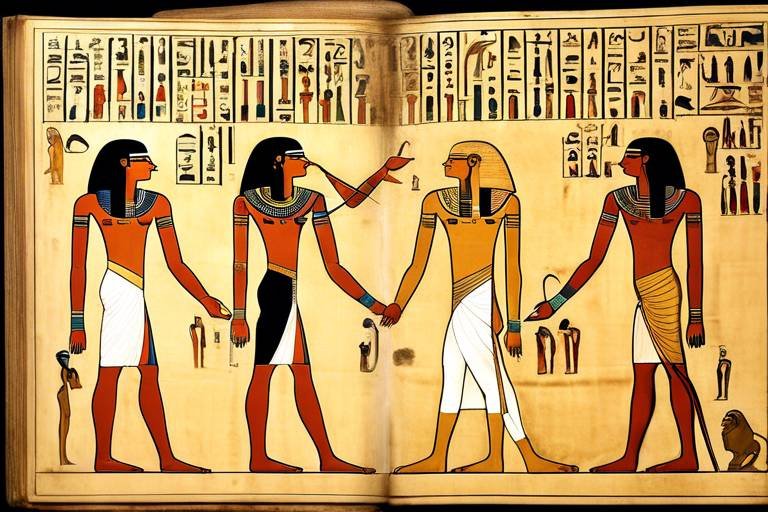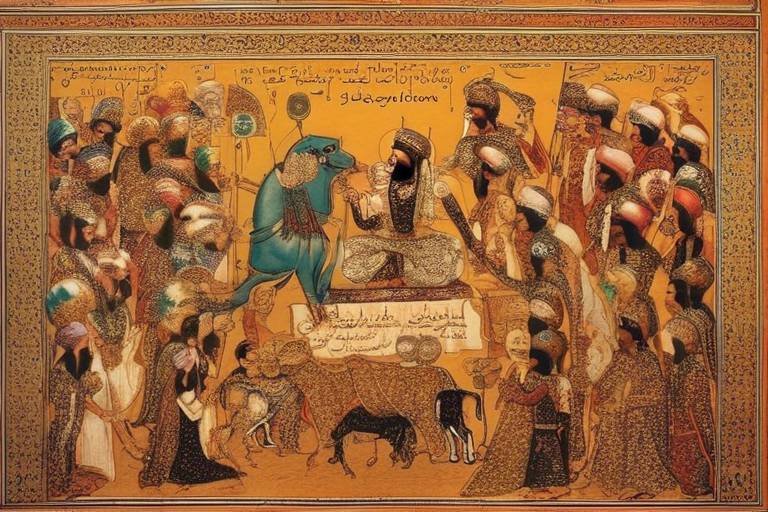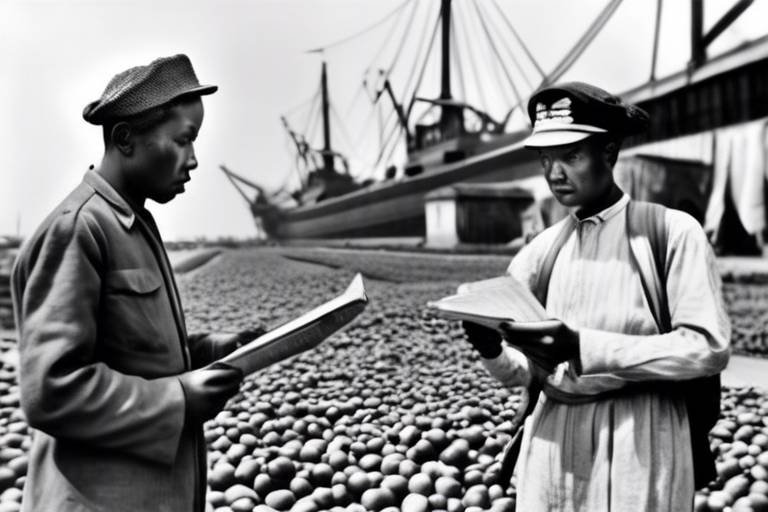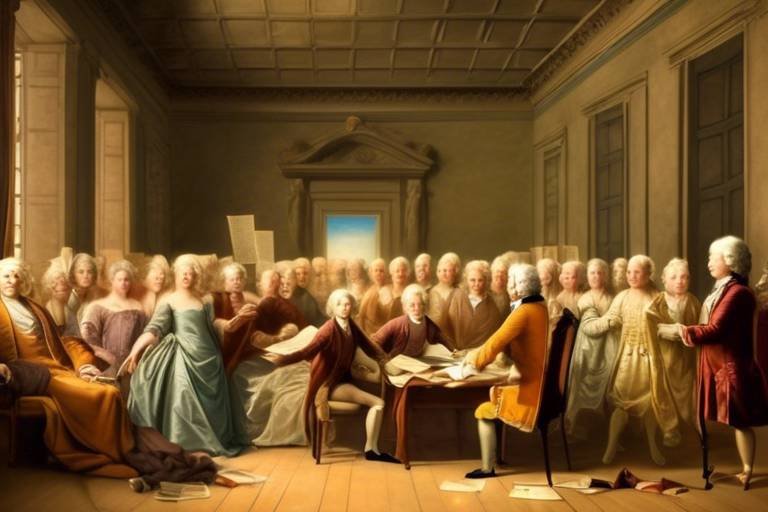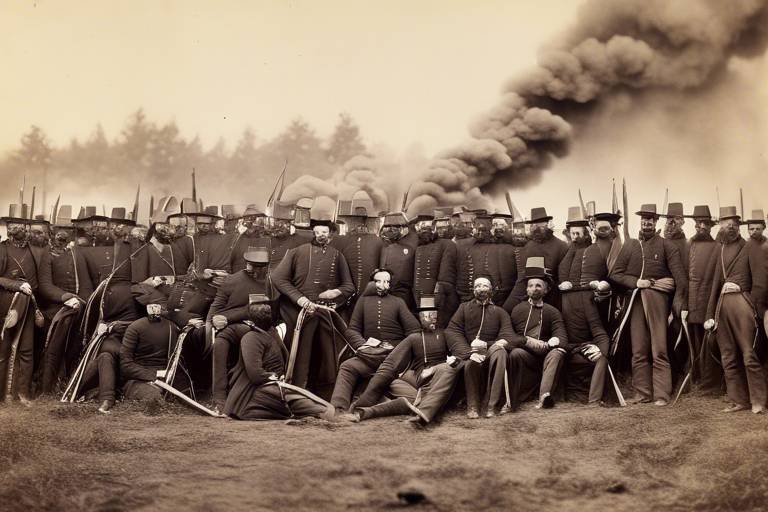World War I - The Great War and Its Aftermath
The outbreak of World War I in 1914 marked a turning point in global history, setting the stage for a conflict unlike any seen before. The Great War, as it came to be known, was fueled by a complex web of political alliances, militarism, imperialism, and nationalism, all converging to create a powder keg waiting to explode.
As the war raged on, major battles like the Battle of the Somme and the Battle of Verdun showcased the devastating impact of modern warfare, with new technologies such as machine guns, tanks, and chemical weapons changing the face of battlefields forever. The entry of the United States into the war in 1917 further shifted the balance of power, shaping the course and outcome of the conflict.
Amidst the chaos of war, the roles of women underwent a profound transformation. From serving as nurses and volunteers on the home front to taking on new responsibilities in the workforce and society, women played a vital but often overlooked role in the war effort, challenging traditional gender norms and paving the way for greater equality.
However, it was the Treaty of Versailles that would leave a lasting imprint on the post-war world. The harsh terms imposed on Germany not only fueled resentment and economic hardship but also sowed the seeds of future conflicts, ultimately leading to political instability and the rise of totalitarian regimes across Europe.
World War I's global consequences were far-reaching, reshaping the geopolitical landscape, dismantling empires, and laying the foundation for the tumultuous years ahead. The staggering human cost of the war, with millions of lives lost, wounded, and displaced, left a scar on the collective memory of nations, highlighting the true horrors of modern warfare.
As we reflect on the aftermath of the Great War, it becomes clear that its impact reverberates through history, shaping the world we live in today and serving as a stark reminder of the fragility of peace and the consequences of conflict.

Causes of World War I
World War I, also known as the Great War, was a global conflict that engulfed the world from 1914 to 1918, leaving a profound impact on the course of history. The causes of World War I are deeply rooted in a complex interplay of political alliances, militarism, imperialism, and nationalism that set the stage for a catastrophic conflict of unprecedented scale and devastation.
One of the primary causes of World War I was the intricate system of alliances that had developed among European powers. These alliances, such as the Triple Entente and the Triple Alliance, created a delicate balance of power that could easily be disrupted by a single event. With tensions simmering across the continent, the assassination of Archduke Franz Ferdinand of Austria-Hungary in Sarajevo in 1914 acted as the spark that ignited the powder keg of Europe.
Militarism, characterized by the aggressive buildup of military forces and arms, further escalated the tensions among nations. Countries were investing heavily in their military capabilities, leading to a dangerous arms race that heightened the risk of conflict. The glorification of war and the belief in the efficacy of military solutions exacerbated the already volatile situation.
Imperialism also played a significant role in the lead-up to World War I, as European powers vied for colonial territories and resources. Competition for overseas empires fueled rivalries and territorial disputes, adding another layer of complexity to an already tense geopolitical landscape. The scramble for colonies and economic dominance heightened tensions and created new fault lines among nations.
Nationalism, the strong sense of national identity and pride, further fueled the flames of war. The fervent patriotism and desire for self-determination among various ethnic groups and nations led to conflicts over borders and territories. Nationalistic fervor stoked the flames of aggression and made diplomatic resolutions increasingly difficult to achieve.
In conclusion, the causes of World War I were deeply entrenched in a volatile mix of political alliances, militarism, imperialism, and nationalism that ultimately culminated in a devastating global conflict. The intricate web of factors that contributed to the outbreak of the Great War serves as a stark reminder of the fragility of peace and the catastrophic consequences of unchecked aggression and conflict.

Major Battles and Events
Exploring the causes, events, and consequences of World War I, known as the Great War, and its lasting impact on global politics, society, and culture.
Examining the complex web of political alliances, militarism, imperialism, and nationalism that contributed to the outbreak of World War I in 1914.
The Great War was marked by a series of monumental battles and events that shaped its course and outcome. Among these, the Battle of the Somme stands out as one of the bloodiest battles in history, with over a million casualties on both sides. The Battle of Verdun, known for its prolonged and brutal nature, symbolized the relentless and costly nature of trench warfare during World War I. Furthermore, the entry of the United States into the war in 1917 significantly shifted the balance of power, ultimately leading to the Allied victory.
Discussing the impact of new weapons and tactics such as trench warfare, machine guns, tanks, and chemical weapons on the conduct of war during World War I.
Exploring the changing roles of women during World War I, from serving as nurses and volunteers on the home front to taking on new responsibilities in the workforce and society.
Analyzing the terms of the Treaty of Versailles, its impact on Germany and Europe, and how it set the stage for political instability and the rise of totalitarian regimes.
Examining how World War I reshaped the geopolitical landscape, led to the collapse of empires, and laid the foundation for future conflicts and the Second World War.
Reflecting on the staggering human toll of World War I, including the millions of lives lost, wounded, and displaced, and the psychological trauma endured by soldiers and civilians.

Technological Advancements in Warfare
Exploring the causes, events, and consequences of World War I, known as the Great War, and its lasting impact on global politics, society, and culture.
During World War I, technological advancements revolutionized the nature of warfare, leading to unprecedented levels of destruction and carnage on the battlefield. The introduction of new weapons and tactics reshaped the way wars were fought, leaving a lasting impact on military strategies and tactics.
One of the most significant technological advancements was the widespread use of trench warfare. Soldiers dug elaborate systems of trenches to protect themselves from enemy fire, leading to a stalemate on the Western Front. This brutal form of warfare resulted in prolonged battles with high casualties and unimaginable suffering for those involved.
Machine guns also played a crucial role in World War I, drastically increasing the firepower available to infantry units. These rapid-firing weapons could mow down soldiers in seconds, changing the dynamics of combat and forcing armies to adapt their tactics to counter this deadly threat.
The introduction of tanks marked a new era in military technology, providing armored protection and firepower on the battlefield. These formidable machines could traverse rough terrain and break through enemy lines, offering a new way to overcome the challenges posed by trench warfare and fortified positions.
Chemical weapons, such as mustard gas and chlorine gas, were another deadly innovation used during World War I. These toxic substances caused horrific injuries and fatalities, leading to widespread fear and devastation among soldiers who faced these indiscriminate weapons of mass destruction.
Overall, the technological advancements in warfare during World War I transformed the battlefield into a nightmarish landscape of death and destruction. The legacy of these innovations would continue to shape military conflicts in the decades to come, influencing the development of new weapons and strategies in future wars.

Role of Women in the War
During World War I, women played a crucial role in various capacities, contributing significantly to the war effort. While men were off fighting on the front lines, women stepped up to fill essential roles on the home front and beyond. One of the primary roles undertaken by women during the war was serving as nurses, tending to the wounded soldiers in hospitals and medical units. Their dedication and compassion helped alleviate the suffering of countless soldiers, showcasing their vital contribution to the war.
Moreover, women also took on roles as volunteers, providing support services and aid to soldiers and their families. They worked tirelessly to ensure that the logistical and emotional needs of the military personnel were met, demonstrating their unwavering commitment to the cause. Additionally, women engaged in fundraising efforts, organizing events to raise funds for war supplies and support programs for soldiers, showcasing their resourcefulness and resilience in the face of adversity.
In addition to their roles in healthcare and support services, women also entered the workforce in unprecedented numbers during World War I. With many men away at war, women filled the labor gap in various industries, from manufacturing to agriculture, keeping essential production running smoothly. Their contributions to the workforce not only sustained the war effort but also paved the way for greater gender equality and economic independence in the post-war era.
Furthermore, the war provided women with opportunities to challenge traditional gender norms and societal expectations. As they took on new responsibilities and roles previously reserved for men, women proved their capabilities and resilience, breaking barriers and reshaping perceptions of gender roles. The war served as a catalyst for social change, empowering women to demand greater rights and recognition in society, setting the stage for the women's rights movement that followed in the years after World War I.
In conclusion, the role of women in World War I was multifaceted and transformative, marking a significant shift in societal attitudes towards women's capabilities and contributions. Their involvement in the war effort not only supported the military operations but also laid the foundation for greater gender equality and empowerment in the post-war world. Women's resilience, dedication, and courage during the war were instrumental in shaping the course of history and advancing the fight for women's rights and recognition in society.

Treaty of Versailles and Its Consequences
The Treaty of Versailles, signed in 1919, marked the official end of World War I and imposed severe penalties on Germany, the perceived aggressor in the conflict. The treaty aimed to punish Germany for its role in the war and prevent it from rebuilding its military strength. One of the key consequences of the Treaty of Versailles was the imposition of massive reparations on Germany, crippling its economy and leading to widespread poverty and resentment among the German population.
Furthermore, the treaty redrew the map of Europe, dismantling empires and creating new nations. It also established the League of Nations, an international organization designed to promote peace and cooperation among nations. However, the harsh terms of the treaty and the perceived injustices it inflicted on Germany sowed the seeds of future conflicts.
The Treaty of Versailles is often cited as a contributing factor to the rise of Adolf Hitler and the outbreak of World War II. The punitive nature of the treaty and the humiliation it brought to Germany fueled nationalist sentiments and created a fertile ground for the emergence of extremist ideologies.
Moreover, the territorial adjustments made by the treaty, particularly the redrawing of borders in Eastern Europe, sowed the seeds of future conflicts and ethnic tensions. The treaty failed to address the underlying issues that had led to World War I, and its repercussions reverberated throughout the 20th century.
In conclusion, the Treaty of Versailles and its consequences played a pivotal role in shaping the post-war world order and laid the groundwork for the turbulent events that followed. It serves as a stark reminder of the dangers of imposing harsh and punitive measures on defeated nations without addressing the root causes of conflict.

Global Consequences and Legacy
World War I had far-reaching global consequences and left behind a complex legacy that continues to shape the world today. The aftermath of the Great War reshaped the geopolitical landscape, leading to the collapse of empires and the redrawing of national boundaries. The Treaty of Versailles, signed in 1919, imposed harsh penalties on Germany, setting the stage for political instability and economic hardship that would ultimately pave the way for the rise of totalitarian regimes.
Moreover, the war marked the beginning of a new era of warfare with devastating technological advancements that forever changed the nature of conflict. The introduction of machine guns, tanks, and chemical weapons revolutionized the battlefield, leading to unprecedented levels of destruction and casualties. The horrors of trench warfare and the use of poison gas left a lasting impact on the psyche of those who lived through it.
On a social level, World War I brought about significant shifts in gender roles and societal norms. Women played a crucial role in the war effort, serving as nurses, volunteers, and factory workers, challenging traditional gender boundaries and paving the way for greater equality and opportunities in the years to come.
The human cost of the war was staggering, with millions of lives lost, wounded, and displaced. The psychological trauma endured by soldiers and civilians alike cast a long shadow over the post-war period, influencing art, literature, and public discourse for decades to come.
Ultimately, the legacy of World War I can be seen in the seeds it sowed for future conflicts, most notably the Second World War. The unresolved tensions and resentments left in the wake of the Great War would come back to haunt the world in the form of new power struggles, ideological conflicts, and territorial disputes, underscoring the enduring impact of this pivotal moment in history.

Human Cost of the War
The human cost of World War I was immense, leaving a trail of devastation and sorrow in its wake. Millions of lives were lost, families torn apart, and entire communities shattered by the brutality of the conflict. The war brought about unprecedented levels of destruction and suffering, both on the battlefield and on the home front.
On the battlefield, soldiers faced the horrors of modern warfare, enduring relentless shelling, gas attacks, and brutal trench warfare. The physical toll of the war was staggering, with millions of soldiers killed or wounded in the line of duty. The psychological impact of the war was equally devastating, as soldiers grappled with the trauma of combat and the loss of comrades.
For civilians
The legacy of World War I can still be felt today, as the world continues to grapple with the consequences of the conflict. The war reshaped global politics, redrew national borders, and laid the groundwork for future conflicts. The human cost of the war serves as a stark reminder of the horrors of armed conflict and the importance of striving for peace and reconciliation. World War I was primarily caused by a complex interplay of political alliances, militarism, imperialism, and nationalism. The assassination of Archduke Franz Ferdinand of Austria-Hungary in 1914 served as the immediate trigger for the war, but underlying tensions had been building for years. Some of the most significant battles of World War I include the Battle of the Somme, known for its massive casualties, the Battle of Verdun, a brutal and protracted conflict, and the entry of the United States into the war following events like the sinking of the Lusitania. Technological innovations such as trench warfare, machine guns, tanks, and chemical weapons revolutionized the way war was fought during World War I. These advancements led to unprecedented levels of destruction and loss of life. Women played diverse roles during World War I, from serving as nurses on the front lines to taking on jobs traditionally held by men in factories and farms. Their contributions were crucial to the war effort and reshaped societal perceptions of gender roles. The Treaty of Versailles imposed heavy penalties on Germany, leading to economic hardship and fostering resentment that contributed to the rise of extremist ideologies. It also redrew the map of Europe and set the stage for future conflicts. World War I reshaped the geopolitical landscape by dismantling empires, redrawing borders, and creating new power dynamics. It sowed the seeds of future conflicts and laid the foundation for the Second World War. World War I resulted in a staggering human toll, with millions of lives lost, wounded, and displaced. Soldiers and civilians alike endured immense physical and psychological trauma, leaving a lasting impact on individuals and societies.Frequently Asked Questions


